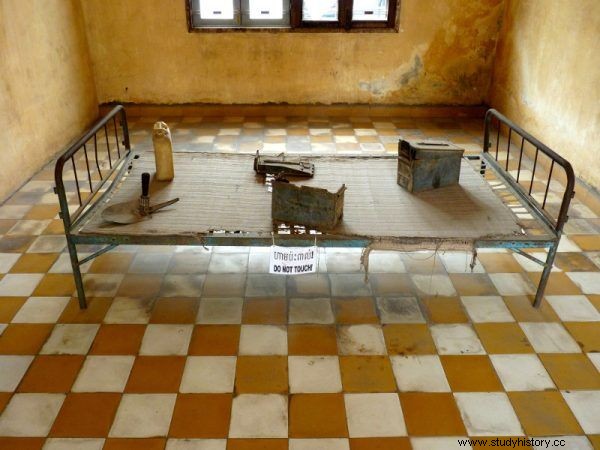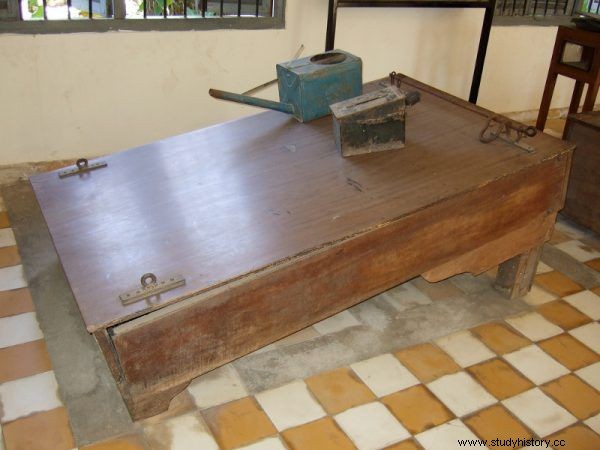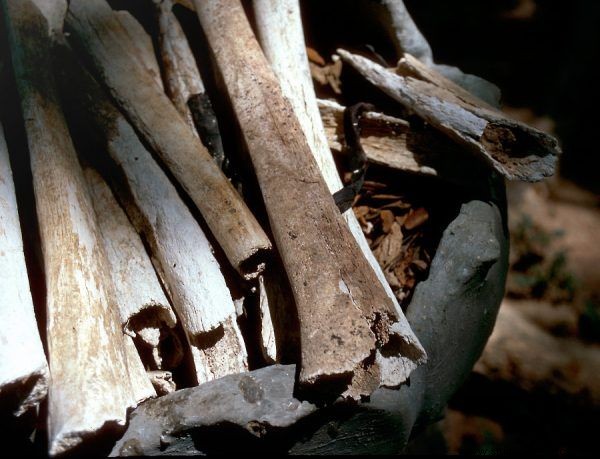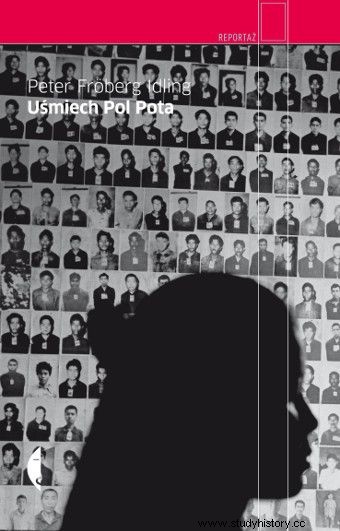Killing with shovels, slitting the throat with blunt tools, suffocating with plastic bags, burying alive, burning - these are only part of the rich repertoire of torture and killing techniques by the Khmer Rouge in Cambodia. The crimes of the Pol Pot regime claimed millions of lives over the course of several years.
On April 17, 1975, Pol Pot, along with the Khmer Rouge troops faithful to him, entered Phnom Penh, the capital of Cambodia. He immediately set about implementing his communist utopia. Within a few days, it closed all schools, offices, hospitals, workplaces and factories. City dwellers were forced to leave them and move to the countryside.
Democratic Kampuchea, as Cambodia was officially called during this period, was to be a classless, self-sufficient state, devoid of all religion and completely cut off from the world, especially capitalist states.
The crime system
In just four years of the Khmer Rouge rule (1975–1979) died at least a quarter of Cambodia's 7 million people . Building an ideal state cost the lives of perhaps 2.5–3 million people. First of all, the intelligentsia and clergy were murdered.
People who knew foreign languages, with delicate hands, undamaged by work and wearing glasses, died. They were murdered because the only social group that could exist in the new society was the broadly understood people. The first commandment of the Cambodian communists was:"You will love, honor and serve workers and peasants." Whoever did not serve them was punished.

In such torture rooms, "enemies of the people" were tormented (photo:Dudva, CC BY-SA 3.0).
Hundreds of thousands of people died of starvation and murderous forced labor in the fields. An elaborate system of prisons was established which used sophisticated torture. Only a few have survived the hecatomb in these death factories.
The most famous prison was built on the site of a former school complex in the Cambodian capital right after the Khmer seizure of power. The prisoners were tortured, then transported to nearby rice fields and killed. Of the several hundred thousand people who passed through this extermination camp, only a few survived.
One of the survivors of Toul Sleng, what was the name of this camp, was Vann Nath. He survived only thanks to his artistic abilities. When the torturers noticed that he was drawing nicely, they ordered him to paint the likenesses of Pol Pot. The others weren't so lucky.
Murderers in action
American shovels were the main tool of the murders. With their blade locked, they looked like hoes that beat the victims' heads until their skulls fractured . Hundreds of executions were carried out in the Cambodian countryside every day. It was common practice to strangle victims with a plastic bag. Prisoners were also beaten to death with bamboo sticks with pointed tips, or their throats were slit with rough bamboo leaves. They were murdered with blunt tools because the regime could not waste ammunition.
Most often, the victims had to dig their own grave, after which conscious people were buried many times. The bodies served as fertilizer. The victims were mostly buried in shallow, mass graves in arable fields. It was common for farmers to pull cassava tubers out of the ground with their roots embedded in the eye sockets of the skull . To this day, many of the fields of death created in this way are being discovered.
Sadistic torture
The imprisonment in prisons is especially remembered by the few who survived this orgy of cruelty. The detainees were chained to the floor, completely restricting their movements. A rich repertoire of torture was applied to the incapacitated, hungry and exhausted prisoners.
First of all, they were beaten with sticks, cables and wires, as well as leather belts with punched spikes. They were forced to keep their hands raised all day. Needles were stabbed at the body and nails pulled out. He was also tortured with water drops falling on his forehead.

Flooding table. The prisoner's legs were chained at the top, wrists at the bottom, and a green watering can was poured over his face (photo:waterboarding.com, CC BY 2.0).
In order to extract a confession, prisoners were burned with red-hot metal and suffocated with a plastic bag. Rape of women was commonplace. It was a common practice to pour alcohol on the open wound. One of the cruelest methods of "interrogation" was by burning prisoners over a fire. Haing Ngor, one of the inmates described this torture as follows:
They hung me from the crossbar, lifting me so my feet were hanging directly over the pile of chaff. Once they had tied them all up, they set fire to the pyres under us. The chaff behaves like sawdust, it burns for days, smoking thick and acrid.
Many people died this way due to burns and thirst.
The millions of insects typical of the Cambodian climate were a huge nuisance for the prisoners. Mosquitoes flying through the windows at night or huge biting ants sat on open wounds and devoured the body. Flies and mosquitoes were also annoying.
Fetal dissection and cannibalism
Pregnant women were also not spared, their bellies cut and the stretched fetuses hung by the umbilical cord and dried in the sun or thrown away. In one of the prisons, a guard was drilling a bayonet in the crotch of a young pregnant woman who had previously died in a plastic bag as a strangler. As the bayonet landed on the pubic bone, it cut open her abdomen and threw the fetus onto a pile of human remains. He then desecrated the woman's body by dissecting her liver and severing her breast.

Bones of the victims dug up in the killing fields (photo:Oliver Spalt, CC BY-SA 2.5).
There was an overwhelming hunger in the country devastated by communism. The seventh commandment of the Khmer Rouge was:"You shall not drink any more or eat anything else but that which is a product of the revolution." The revolution, however, was unable to feed the people. It should therefore come as no surprise that cannibalism was rampant on a massive scale.
People went mad with hunger and ate not only the dead rats, but even their own children and neighbors. The already mentioned Hanig Ngor, who survived this communist hell, recalls that in his camp hungry prisoners tortured a pregnant woman, threw the fetus out and ate her insides.
Youthful torturers
Prison guards were trained communist militants at a very young age, even 12–13 years old. Young people and children from the countryside became the main tool of the genocidal regime of Pol Pot, famous for its inhuman cruelty. They were subjected to systematic indoctrination, therefore they were completely devoted to the new power.

The article was based, inter alia, on for a book by Peter Fröberg Idling, "Pol Pot's Smile" (Czarne 2010).
Separated from their families, the children also acted as informers. By visiting their homes, they exposed the people's alleged enemies. Neither father nor mother could be sure that their child was not a spy. This explains the exemplary discipline in the Khmer Rouge ranks.
End of Hell
In 1979, Cambodia was invaded by Vietnam and the power of the Khmer Rouge was overthrown. Pol Pot with the remnants of his army took refuge in the jungle, where he died, probably poisoned, in 1998. It was only in 2009 that the first trial of the perpetrators began. Kaing Guek Eav, the "Ghost", commandant of the Toul Sleng camp, was then brought to trial. He was sentenced to life imprisonment. To date, only a few members of Pol Pot's regime have been tried.
